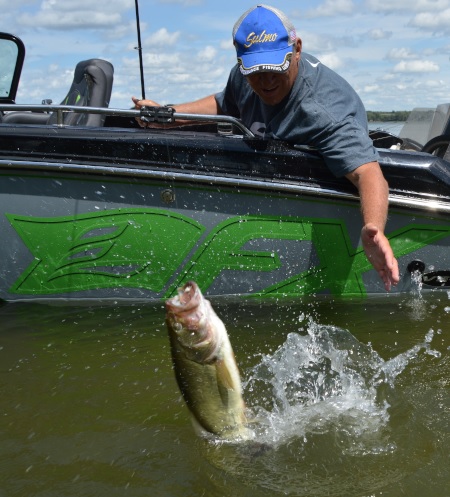
Fishing has been on my mind a lot lately. I’ve been thinking of past trips and future trips. Many past days of fishing were learning experiences. What I learned on those fishing trips of the past will be applied to trips of the future. Following are some ideas that might help you catch more fish the next time you go fishing.
Many of us fish in rivers. River fish are less affected by weather than lake fish, so river fish are often willing to eat when lake fish are being finicky. River fish have to contend with current, so they use up more energy, which means they need to eat more often. Current is a very important consideration when fishing in a river. Keep in mind that river fish generally face upstream when they are interested in eating. They instinctively know that wounded bugs or minnows will be washing downstream with the current, so they face upstream so they can see their prey coming. When possible, present your bait so it’s moving downstream in a natural manner and can be easily seen by fish facing upstream. There are times when we present our bait by moving it upstream, but when you can, present your bait so it’s moving downstream.
A good rule-of-thumb for many anglers is to use the largest bait that the fish will take. That will usually result in larger fish. There are times when fish will prefer a smaller bait, especially when they’re in a mood where they’re not real interested in eating. They’ll ignore a big bait, but they’ll eat something small. Start small and if they’re biting, go a little bigger. Keep going bigger until they quit biting. It’s interesting: In the cold waters of the spring season, fish generally like smaller baits, but in the cold waters of autumn, they’ll go for bigger baits.
Consider color. I’ve had the good fortune to fish with some of the most successful anglers anywhere, and when the topic of lure color came about, they all agreed that color was a very important consideration. Water clarity, season, and conditioning were a few of the reasons that lure color will impact your catches.
In clear water, natural appearing baits are what many of the best anglers reach for, and when the water is stained or dirty, they like brighter colors. Usually, not always.
Sometimes a new color, something the fish haven’t seen before can be very good. They’ll attack a new color readily and ignore the colors that they’ve been seeing. The next year of the next trip, the fish will show a preference for another new color.
Often, when baitfish numbers are high, a bait that looks nothing like the abundant baitfish will be better. When baitfish numbers are low, a bait resembling the lake’s primary baitfish will be very productive.
If you’re fishing from a boat and there are several anglers in the boat, everyone should be trying a different color bait until the fish reveal what they want on that day. Sometimes there will be a preference, sometimes not.
Last thing: I use the heaviest line that I can get away with. If I can get as many bites on eight pound test as I can six pound test, I’ll use the eight pound test. However, some presentations lend themselves to lighter line, and lighter line usually works better in clear water. Nonetheless, heavier line usually allows us to land the fish a bit quicker, and that’s better for the fish if it is going to be released.
There are lots of little things that we can do to increase the number of bites we get. Keep these ideas in mind and you’ll increase your odds for fishing success.
PHOTO CAPTION: This largemouth wanted a 4 inch, natural appearing Ocho plastic worm on this clear water lake in mid-summer.
To see new and old episodes of Fishing the Midwest television, fishing articles and fishing videos, go to www.fishingthemidwest.com
By Bob Jensen.
